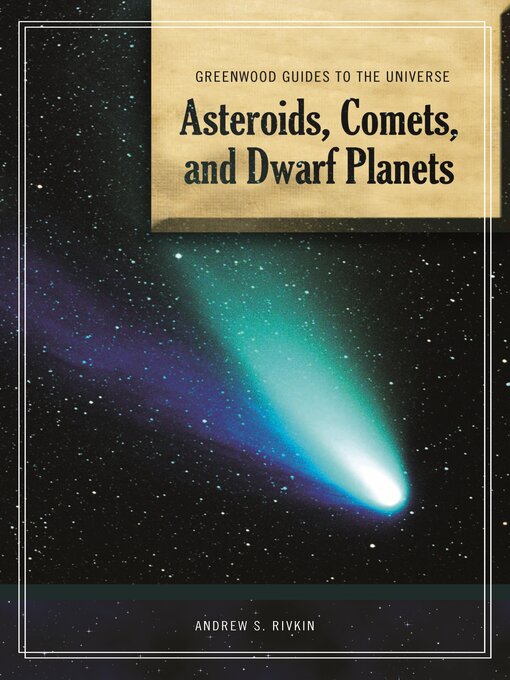This volume in the Greenwood Guides to the Universe series covers asteroids, comets, and dwarf planets—those small bodies that revolve the Sun—and provides readers with the most up-to-date understanding of the current state of scientific knowledge about them. Scientifically sound, but written with the student in mind, Asteroids, Comets, and Dwarf Planets is an excellent first step for researching the exciting scientific discoveries of the smallest celestial bodies in the solar system.
The book will introduce students to all of the areas of research surrounding the subject, answering many intriguing questions. It defines a dwarf planet and explains why Pluto is one. It looks at how such small bodies form, what they are made of, and what kind of atmospheres might they have. And it asks—and answers—whether asteroids, comets, and dwarf planets present a hazard to the Earth or to spacecraft.
-
Creators
-
Series
-
Publisher
-
Release date
October 15, 2009 -
Formats
-
Kindle Book
-
OverDrive Read
- ISBN: 9780313344336
-
PDF ebook
- ISBN: 9780313344336
- File size: 3762 KB
-
-
Languages
- English
-
Reviews
-
School Library Journal
February 1, 2010
Gr 9 Up-Aimed at motivated nonspecialists, these volumes (two of seven, all available individually or as a set) fall short in the illustration department, but offer generous measures of specific, up-to-date, systematically presented information. Chaple surveys the gas giants and their moons, adding discussions of Jovian-type planets orbiting other stars and the "Voyager 2" space mission. Covering the solar system's non-moon smaller bodies, from comets plunging out of the distant Oort Cloud to NEO (Near Earth Objects) asteroids and hypothetical "Vulcan Objects" spinning around the Sun inside Mercury's orbit, Rivkin devotes chapters to orbits, compositions, origins, and relevant space probe missions. Both volumes also fill in the historical background of our astronomical observations and provide annotated lists of Web sites at each chapter's end and other helpful resources in the back matter. As prose stylists, Chaple is the livelier of the two, supplying, for instance, enticing discussions of future tourist sites on each planet's moons ("Honeymooners, why go to Niagara Falls, when you can come to Mimas and enjoy the romance of Saturn!") and explaining how to pronounce "Uranus" without hearing giggles. Despite the few small, murky black-and-white photos and a scanty assortment of diagrams, these volumes will be valuable complements and updates for either general science encyclopedias or specific ones such as Paul Murdin's "Encyclopedia of Astronomy and Astrophysics" (Nature Publishing Group, 2001)."John Peters, New York Public Library"Copyright 2010 School Library Journal, LLC Used with permission.
-
subjects
Languages
- English
Loading
Why is availability limited?
×Availability can change throughout the month based on the library's budget. You can still place a hold on the title, and your hold will be automatically filled as soon as the title is available again.
The Kindle Book format for this title is not supported on:
×- - Kindle 1
- - Kindle 2
- - Kindle 4
- - Kindle 5
- - Kindle 7
- - Kindle DX
- - Kindle Keyboard
- - Kindle Paperwhite
- - Kindle Touch
- - Kindle Voyage
Read-along ebook
×The OverDrive Read format of this ebook has professional narration that plays while you read in your browser. Learn more here.

